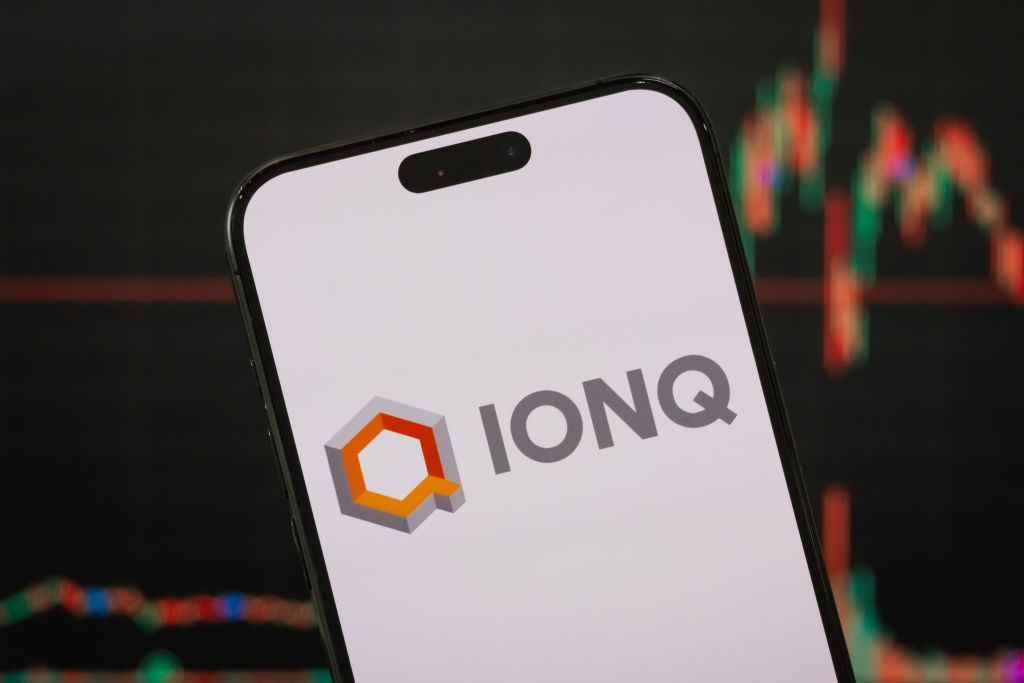Ensign Group: profiting from US private care
Nursing and care-home specialist Ensign Group should thrive as Americans age. Matthew Partridge picks the best way to play it.

The British government has incurred criticism for its decision to raise taxes in order to fund social care. But however the issue is ultimately dealt with, it will be a recurring theme over the next few years as populations age and require more looking after. And given this backdrop it’s no surprise that private care providers have attracted the attention of investors recently.
Shares in nursing and care-home specialist Ensign Group (Nasdaq: ENSG), for instance, have done very well over the past eighteen months, more than doubling from their lows in March 2020. However, over the past few weeks they have fallen back, and are now approximately 20% down from their peak in the early spring. Does this mean that all the investment opportunities have disappeared, or is this just a pause?
A fragmented industry
Ensign operates 250 US care homes employing 25,000 people in 13 states on a franchise model, with around two-thirds of its homes in five states: California, Texas, Arizona, Utah and Colorado. While this makes it the second-largest provider in the US, the fact that the industry is so fragmented means there is still plenty of room for expansion, and Ensign has been steadily growing its presence by buying up care homes. Even though Ensign spun off its home health and hospice division in 2019, its overall number of facilities has grown from 150 in 2015, and 223 in 2019 to 250 homes as of July 2021.
Subscribe to MoneyWeek
Subscribe to MoneyWeek today and get your first six magazine issues absolutely FREE

Sign up to Money Morning
Don't miss the latest investment and personal finances news, market analysis, plus money-saving tips with our free twice-daily newsletter
Don't miss the latest investment and personal finances news, market analysis, plus money-saving tips with our free twice-daily newsletter
Ensign’s growth does not just come from increasing the number of homes but is also a result of growing the amount of money it derives from each home, with their average revenue and occupation rates increasing after several years of ownership. This success, combined with the overall growth of the market, which is set to expand by around 7% a year thanks to America’s ageing population, has helped Ensign grow its revenue by nearly 80% from 2015 to 2020, around 12% a year. The group’s earnings per share have risen nearly threefold during the same period. Both revenue and earnings are expected to carry on growing over the next few years.
Ensign’s other metrics also look impressive. Its operating margin increased from around 6% in 2015 to 9% five years later. It also makes good use of its capital, achieving a double-digit return on capital, a key gauge of profitability. This has allowed it to eliminate its net debt even as it expands. Furthermore, the fact that it trades on a 2022 price/earnings (p/e) ratio of 20 times, roughly the same as the overall US market, means it is hardly expensive in view of the growth opportunities in this area.
Still, Ensign’s Group’s share price has been in the doldrums, so I suggest you wait a little until it regains its momentum before jumping in. Go long after it reaches $85 a share, around 10% above its current price of $77. When it does reach that level, I recommend you go long at £40 per $1, with a stop-loss at $60. This gives you a total downside of £1,000.
Trading techniques: using circuit breakers
Since 1988, US regulators have sought to impose so-called “circuit breakers” on both individual shares and the overall market. Once the S&P 500 falls by 7% from its opening price, trading is halted for 15 minutes (unless it is late in the trading day), with another brief interruption once the S&P 500 declines by 13%. Finally, if the market falls by 20%, then all trading is halted for the rest of the day.
For individual shares in the S&P 500, a 5% fluctuation up or down in any five-minute period will cause trading in that share to be halted for five minutes, while there is a temporary short-selling ban on any share that has fallen by 10% or more in a single day. Those supporting circuit breakers argue that they can exert a calming effect on the market by giving traders a breathing space, reducing panic-buying or selling. Advocates also claim that breakers can prevent attempts to distort or manipulate the market.
However, critics argue that it not only interferes with the market adjusting to changes in the price that are the result of new information, but could also make a crash worse by depriving the market of liquidity.
For traders the big question is whether a circuit breaker represents a buying opportunity (once trading is allowed to resume) or presages future falls. According to a study by Concordia University in Montreal, US shares that fell by 10% or more between 2012 and 2015, thus triggering the short-selling ban, tended to perform roughly in line with the market once the ban expired, suggesting that circuit breakers are not a useful trading indicator.
How my tips have fared
It has been a poor fortnight for my four long tips. Three fell and only one appreciated. Media group ITV slid from 116p to 108p, homebuilder DR Horton decreased from $94.96 to $87.17 and construction firm Morgan Sindall slipped from 2,615p to 2,507p. The only bright spot was spread-betting firm Plus500, which increased from 1,400p to 1,416p.
Broker TP ICAP, US homebuilder PulteGroup and Royal Mail remain below the level at which I recommended that you should go long. Overall, my long tips are making a total profit of £3,253, down from £4,146 two weeks ago.
My six short tips have done better, with four going down, one rising and one unchanged. Electric-car company Plug Power fell from $26.40 to $25.72, digital currency bitcoin dropped from $51,253 to $43,075 and remote medicine firm Teladoc dipped from $144.56 to $136.
Cinema chain AMC also declined from $44.02 to $40.29. However, cloud-computing specialist Snowflake remain unchanged at $310 while electric carmaker Tesla increased from $706 to $730. Overall, my short tips are making a net profit of £109, compared with a loss of £360 a fortnight ago.
I now have four active long tips (ITV, DR Horton, Morgan Sindall and Plus 500) and six shorts (Plug Power, bitcoin, Teladoc, AMC, Snowflake and Tesla). I also have three pending long tips yet to reach the level at which you should activate them (Royal Mail, TP ICAP and Ensign Group).
I don’t advocate closing any of these positions, but I think you should cut the level at which you cover Snowflake and Plug Power to $325 and $40 respectively (down from $350 and $55) and raise the stop-loss on DR Horton to $70 (from $63).
Sign up for MoneyWeek's newsletters
Get the latest financial news, insights and expert analysis from our award-winning MoneyWeek team, to help you understand what really matters when it comes to your finances.

Matthew graduated from the University of Durham in 2004; he then gained an MSc, followed by a PhD at the London School of Economics.
He has previously written for a wide range of publications, including the Guardian and the Economist, and also helped to run a newsletter on terrorism. He has spent time at Lehman Brothers, Citigroup and the consultancy Lombard Street Research.
Matthew is the author of Superinvestors: Lessons from the greatest investors in history, published by Harriman House, which has been translated into several languages. His second book, Investing Explained: The Accessible Guide to Building an Investment Portfolio, is published by Kogan Page.
As senior writer, he writes the shares and politics & economics pages, as well as weekly Blowing It and Great Frauds in History columns He also writes a fortnightly reviews page and trading tips, as well as regular cover stories and multi-page investment focus features.
Follow Matthew on Twitter: @DrMatthewPartri
-
 Half of UK homeowners will need to tap housing wealth to pay for retirement
Half of UK homeowners will need to tap housing wealth to pay for retirementUnlocking property wealth could inject £21 billion each year into UK economy by 2040, according to new research
-
 When will M&S take online orders again?
When will M&S take online orders again?Shoppers have not been able to place orders on the M&S website for more than two weeks, following a cyberattack. Meanwhile, the retailer’s share price has plummeted by 15%. When will things get back to normal?
-
 IonQ 'offers no quantum of solace'
IonQ 'offers no quantum of solace'Opinion Quantum computing group IonQ is inefficient, overhyped and overpriced
-
 How Corpay is cashing in on expenses
How Corpay is cashing in on expensesFinancial technology company Corpay has found a profitable niche managing corporate payments
-
 Drone company Red Cat Holdings sees shares tumble
Drone company Red Cat Holdings sees shares tumbleRed Cat, the unprofitable and inefficient US drone manufacturer is set to slide
-
 Why Sezzle's shares may be overvalued
Why Sezzle's shares may be overvaluedSezzle, the US buy-now-pay-later provider, is resting on shaky foundations. Is it time to sell this stock?
-
 MoneyWeek's trading tips - how did they fare in 2024?
MoneyWeek's trading tips - how did they fare in 2024?My tips have yielded a profit and the open positions are proving lucrative, too
-
 Should you invest in Trainline?
Should you invest in Trainline?Ticket seller Trainline offers a useful service – and good prospects for investors
-
 Harworth doubles profit as revenue soars – should you buy?
Harworth doubles profit as revenue soars – should you buy?Harworth, a specialist property developer, is well-aligned with government policies, with revenue expected to rise by over 50% this year, and a further 30% the year after.
-
 Bitcoin miner Riot Platforms bleeds money – what happens now?
Bitcoin miner Riot Platforms bleeds money – what happens now?Riot Platforms struggles to make a profit and looks absurdly overvalued. Are troubles brewing?